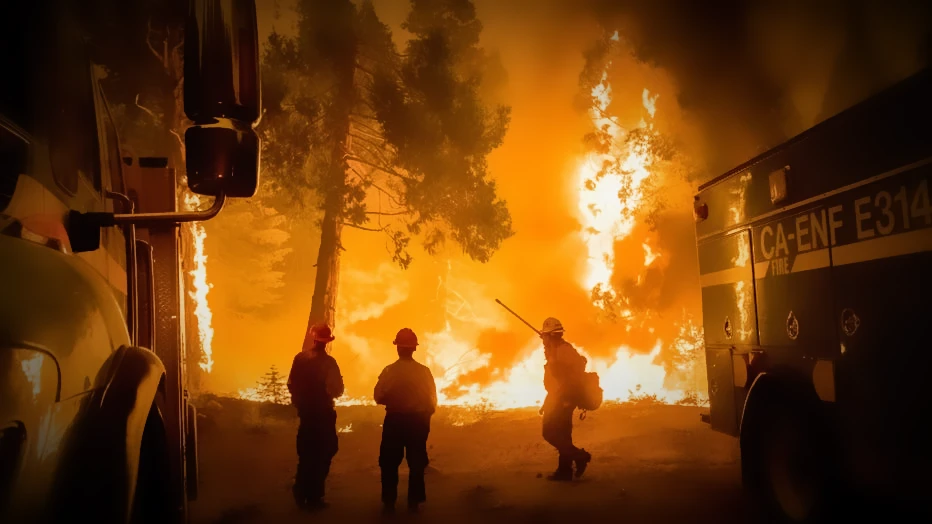Wildfire is the Weapon Against Wildfire: Cal Aims to Ignite 400,000 Acres a Year
Tribune News Service Bay Area News Group
PLACERVILLE, California (InEDC) Nov 8, 2022 — After a long dry summer, the Santa Cruz Mountains were cool and damp on Friday morning, signaling the perfect time for crews to gather in an open meadow, drip torches in hand.
Their goal: fight fire with fire.
The blaze at Soquel Demonstration State Forest, part of the state’s ambitious new plan to ignite more small fires to prevent large ones, was only four acres in size, or 0.15% of the 2,681-acre wilderness. It was extinguished by nightfall.
But it’s taken 11 years to plan and 19 months to prepare, foreshadowing the challenge faced by the Golden State as it seeks to improve the health of forests and the safety of communities.
Friday’s strategy, part of a larger multi-phase plan at the site, will need to be repeated thousands of times to meet the state’s goal of burning 400,000 acres every year by 2025. Between 10 and 30 million acres of California’s landscape need some form of fuel reduction treatment — and burning is the most efficient approach.
“It is a start,” said forest ecologist Rob York of UC Berkeley. “But we still have a very long way to go before we can say that it is being used enough to make a difference at the ecosystem scale.”
For a century, California has kept wildfire out of its forests, snuffing out every spark. Now it’s playing catch-up.
This week a 300-acre burn was conducted on Wilder Ranch State Park, north of Santa Cruz. Last month, 20 acres were burned near Upper Crystal Springs Reservoir in San Mateo County. Sonoma County has held two recent burns, one in Pepperwood Preserve and another in Jack London State Historic Park, on the ridge above historic buildings.
Without careful preparation, burns can turn disastrous. Earlier this year, an escaped blaze in New Mexico scorched hundreds of structures, triggering new restrictions and a 90-day pause on all U.S. Forest Service prescribed burns.
But if done well, they work. When the explosive Caldor Fire reached the 2019 footprint of treated sites, the fire noticeably slowed, sparing South Lake Tahoe towns.
“Prescribed burning” is not a new concept. It was practiced by Native Americans for millennia to clear lands for hunting and return nutrients to the ground.
But the state’s Strategic Plan for Expanding the Use of Beneficial Fire, announced last March, aims to greatly expand its modern use by improving regulatory efficiency, expanding the workforce, covering some liability costs and other steps. The U.S. Forest Service also has a 10-year strategy to increase prescribed burns by four times the current levels in the West.
“Acreage targets cannot be reached without increasing the size of beneficial fire projects,” according to the state’s plan. “Projects that are currently tens or hundreds of acres must expand to encompass thousands of acres, when conditions are favorable.”
In the Soquel Demonstration State Forest, between Los Gatos and Santa Cruz, fire is long overdue.
Coastal redwood forests typically burn every 10 to 60 years, according to Matthew Mosher, an environmental scientist with Cal Fire’s San Mateo-Santa Cruz unit. But this forest hasn’t burned for over a century. […]
